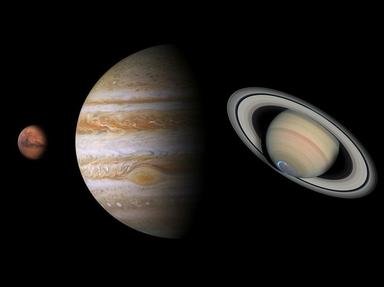Quiz Answer Key and Fun Facts
1. Neptune's winds are the fastest in the Solar System.
2. Neptune's diameter is ______________.
3. What is the mass of Neptune?
4. Does Neptune ever get farther from the Sun than Pluto?
5. What is the rotational period of Neptune?
6. When was Neptune officially discovered?
7. Neptune has made several complete orbits since its discovery.
8. What is Neptune's largest satellite?
9. Even though Neptune is so far from the Sun, it has its own internal heat source.
10. What is the Greek name for Neptune?
11. What is the name of the second satellite discovered around Neptune?
12. How big is Neptune's largest satellite?
13. What color does Neptune appear in a small telescope?
14. When did the Voyager spacecraft fly by Neptune?
15. Name the satellite that rotates retrograde around Neptune.
16. Voyager 2 discovered how many satellites around Neptune?
17. None of Neptune's satellites have any atmosphere?
18. Who discovered Neptune?
19. Neptune is not visible to the naked eye.
20. What is the mass of Neptune's largest satellite.
Source: Author
almach
This quiz was reviewed by FunTrivia editor
crisw before going online.
Any errors found in FunTrivia content are routinely corrected through our feedback system.

